Topps Tiffany Baseball cards are synonymous for offering upgraded versions of the company’s sets from 1984 through 1991. One way to identify them is through the glossy coating on the front. While this isn’t the hardest thing, without the correct light, it can sometimes be tricky.
On the backs, Tiffany cards have white backs. For the flagship 792-card sets, this is a fast way to tell as the regular cards are printed with gray stock. The contrast between the two are obvious.
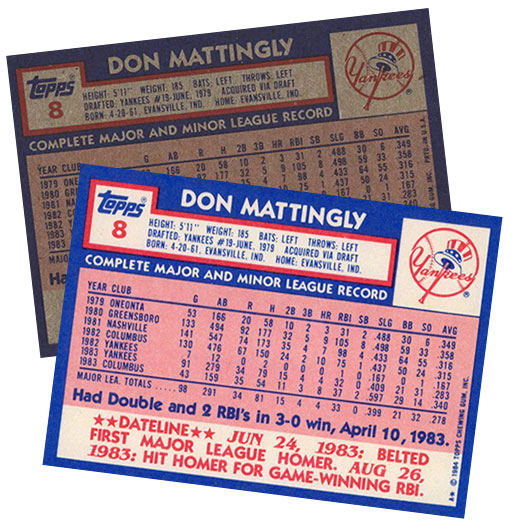
But this method falls apart for Topps Traded sets. Both the common and Tiffany sets have white stock on the back.
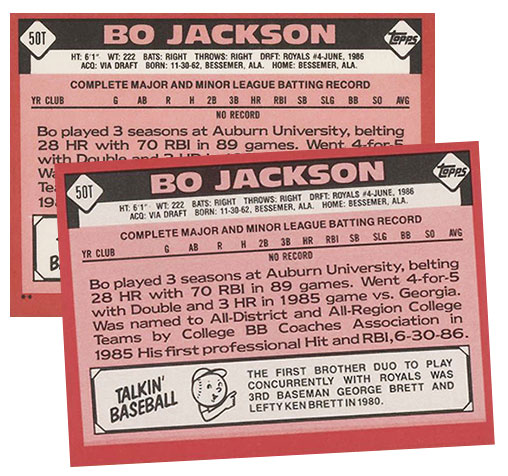
There’s a third way to identify Topps Tiffany cards that works for some (but not all) sets that can be especially helpful with Traded cards. You might want to call it the Star Method.
It requires a closer look at the back. More exact, it requires you to count stars in the fine print.
Identifying Topps Tiffany Cards with the Stars on the Back
Among the copyright or somewhere on a back edge, flagship Topps cards from the Tiffany era, have one or two asterisk marks, or stars (*).
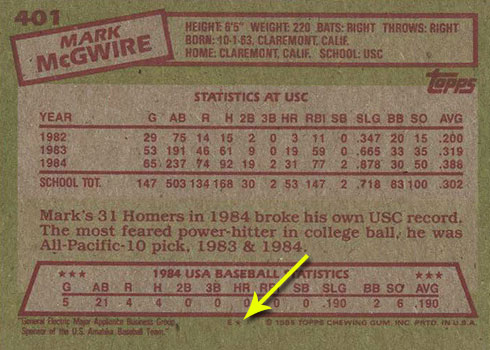

As for Tiffany sets, some have them, some don’t. And those that do don’t always match up with their flagship counterparts.
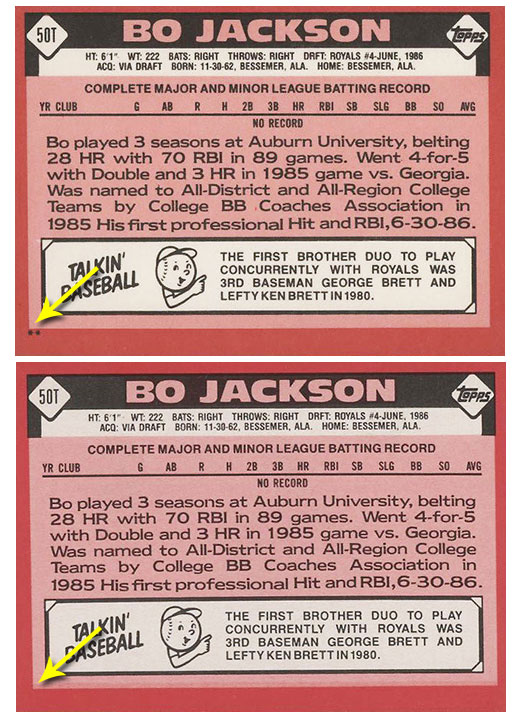
So knowing the number stars are on which back is one more tool for confirming a rarer Topps Tiffany card from a regular card.
For the bigger sets, the Star Method doesn’t work all that often as the number of * usually matches. But with the different card stocks on the back, it’s also not as important.
See Also:
30 Most Valuable Topps Tiffany CardsThe Star Method comes into play more for Topps Traded and Topps Traded Tiffany cards. This is where you’ll find more sets where the star counts don’t align. With both of these have bright backs, this simple trick makes the job of telling the two apart that much easier.
It’s worth noting that in 1990 and 1991, regular Topps Traded sets have both gray and white backs. These separate cards that were inserted in packs and those that came in the traditional Traded box set. Not only is the card stock different, but the number of * is different in each.
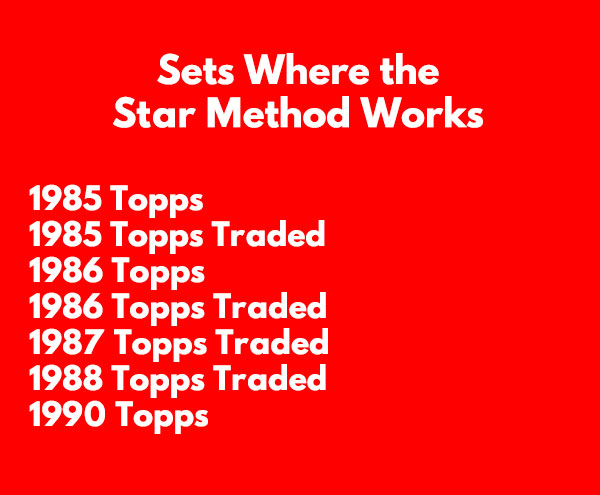
Topps Vs. Topps Tiffany Back Comparisons
Here’s a gallery comparing Topps and the corresponding Topps Tiffany card backs so you can quickly check the card stock and number of stars. The number of * on individual backs are noted.
1984 Topps Baseball
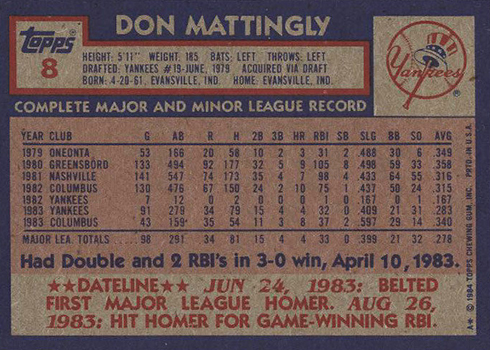

1984 Topps Traded Baseball
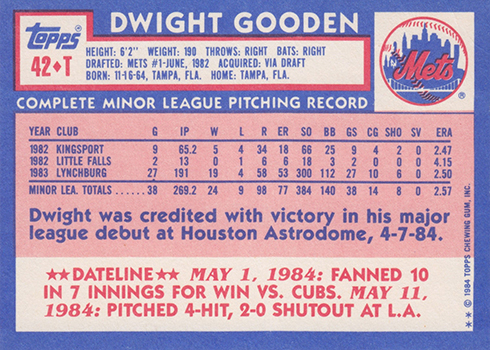
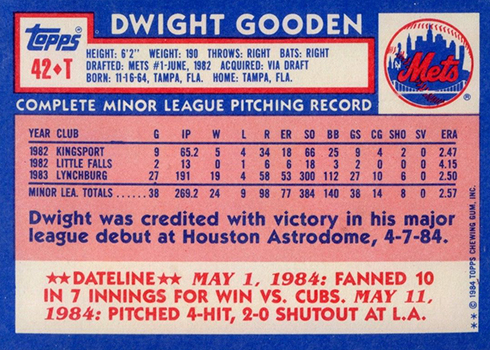
1985 Topps Baseball

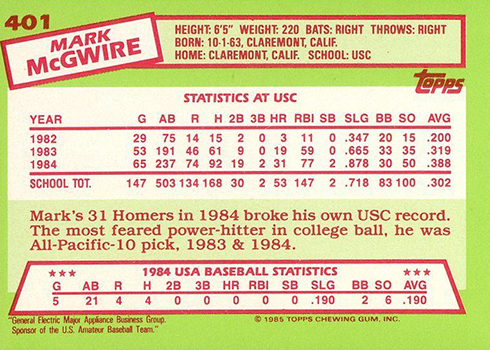
1985 Topps Traded Baseball


1986 Topps Baseball
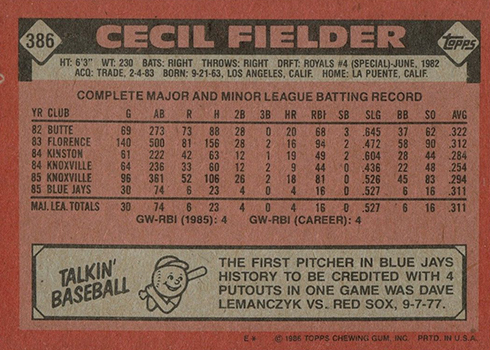
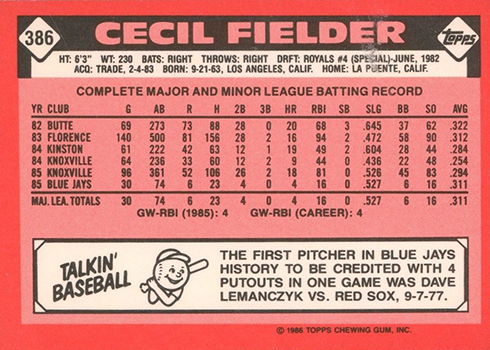
1986 Topps Traded Baseball
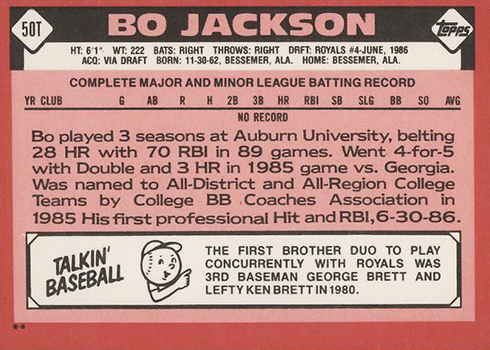

1987 Topps Baseball
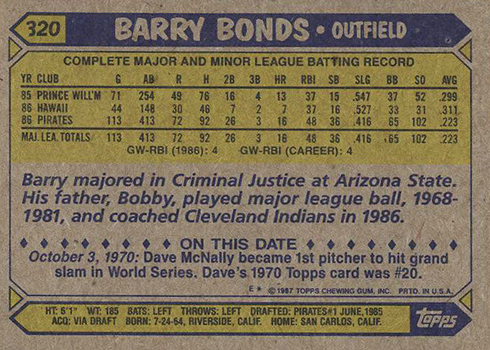

1987 Topps Traded Baseball
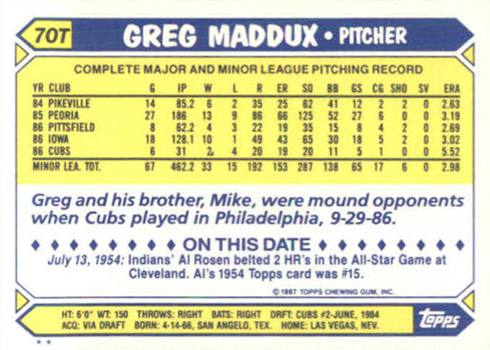
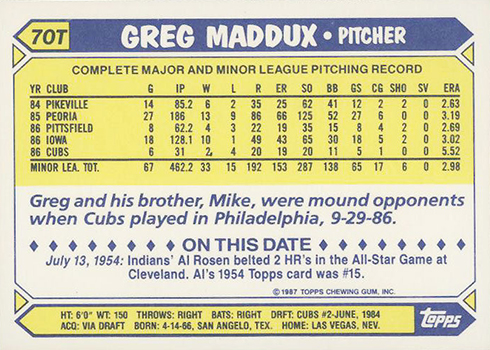
1988 Topps Baseball

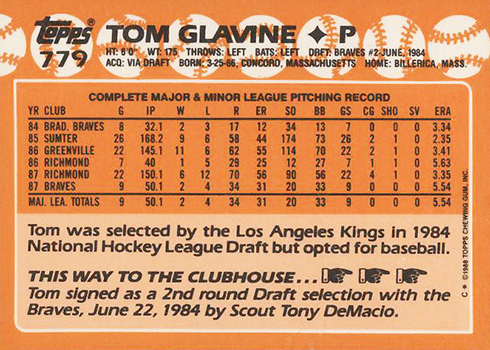
1988 Topps Traded Baseball
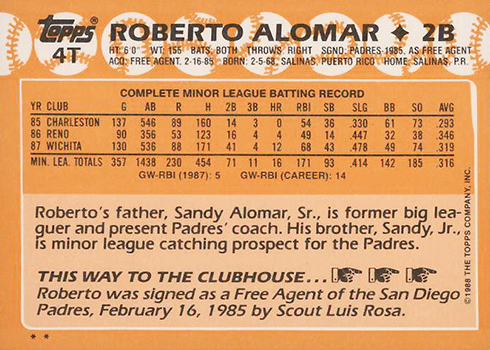
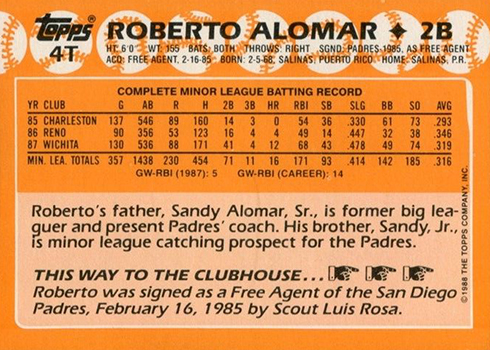
1989 Topps Baseball

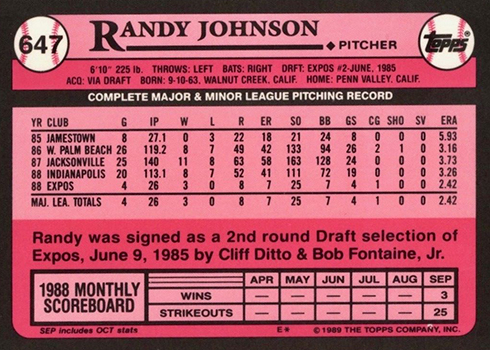
1989 Topps Traded Baseball

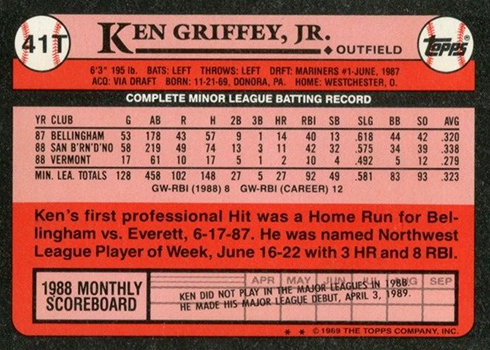
1990 Topps Baseball
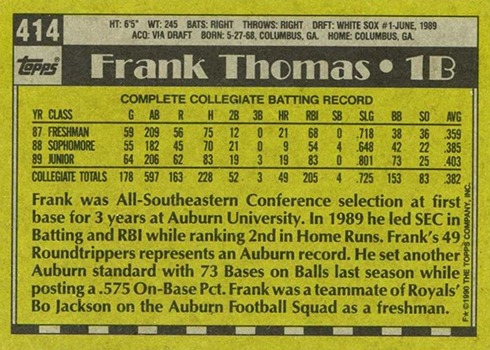
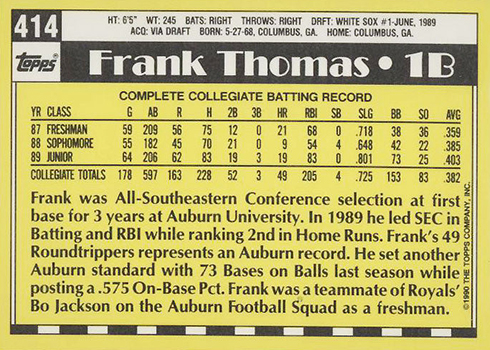
1990 Topps Traded Baseball

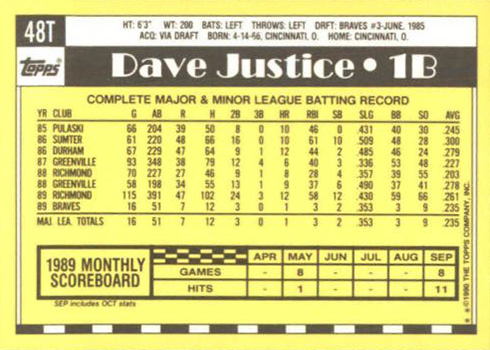
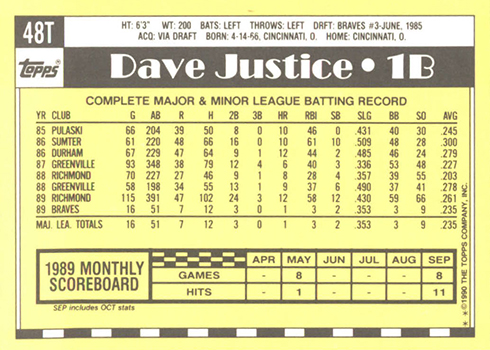
1991 Topps Baseball
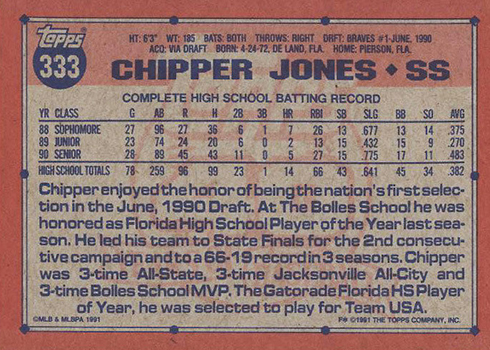
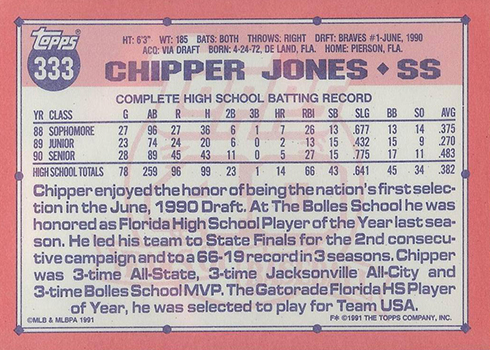
1991 Topps Traded Baseball
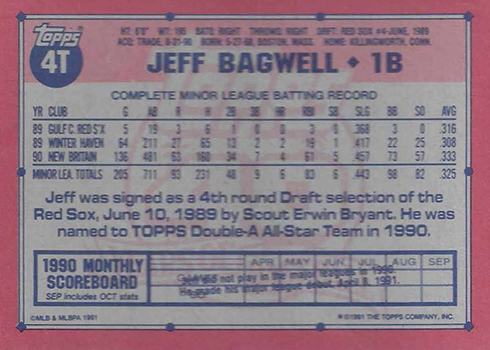

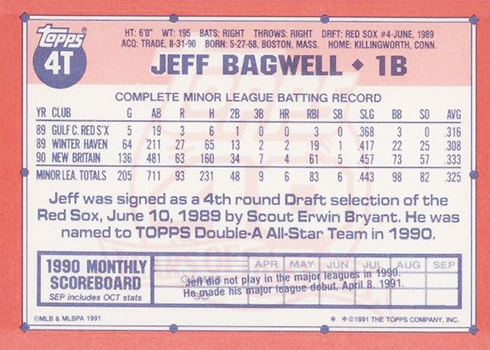

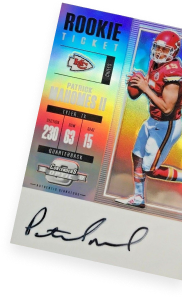

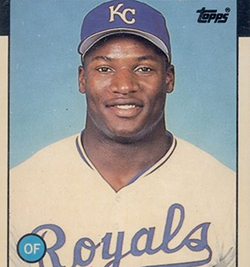




When they make it so complicated, I have to ask myself, “What’s the point?” because the cards are essentially the same.
@Jonathan — It was a different time 30 years ago. It wasn’t really overly complicated. Sets were issued as a box set. Also, cards were sold primarily in person or through mail order ads. That meant you had the ability to touch cards and feel the glossy. Today so much is done online, that tactile experience is lost for stuff like this.
Very Nice, thank you
Hi,
Just have a question for about what you think a sealed box set of 1991 upper deck cards go for today?
Thank you
Tim
@Tim – You’d probably be lucky to find someone to pay $10 for one. Unfortunately, there are a ton of them out there.
No comments
Really makes you wonder why Topps simply didn’t just make the Tiffany cards the main cards eliminating that cheap dark cardboard stock that the stubbornly held onto until 1992. They would have beaten Upper Deck to the premium punch years before Upper Deck entered the scene in 1989 and forever changed sports card collecting. Maybe stubborn and slow to change is what defines Topps in the mid 80’s and 90’s.
The hardest year to tell is the 1989 Topps Traded Tiffany, if I am correct; the gloss isn’t as thick as the others. I got 2 from different sellers 1 with lots of good feedback, the other I was concerned about but he said he pulled it from a set himself and ebay has protection) and I was concerned about both when I saw them (due to minimal gloss.) I compared them to my slabbed Topps Traded, but wasn’t sure (the black was a little blacker and the color a little richer.) I called a local card shop, but the person who answered the phone had never heard of Tiffany edition. But, the comparison photos on this site make it easier to tell. As long as my eye is right, this is correct; but I will buy a non-slabbed standard of the same card to look at the gloss and a tiffany of a cheaper card to compare as well.
(Update) Both were only regular issue, both sellers agreed to refund my purchase. One was easy to identify, the back was identical to a regular issue; the other one had a slightly different back. Both looked like tiffany on my screen when held up to the website. But, compared to a real Tiffany issue; it’s easy to tell. The Tiffany issues are always much glossier than regular. The Topps Traded seems a semi-gloss which had me cautiously fooled until I saw the real thing and knew it had to be returned. Hope this helps, it’s almost impossible to tell the 1989 Topps Traded Tiffany in photos (unless they can display the gloss at an angle.) If you buy any raw online, have a real one to compare it to and hope they don’t have a can of gloss spray and a pile of standard issue Topps Traded. What is it worth in each grade, I’d sacrifice the potential of a 10 (buying raw) if I got an 8 for close to the raw price of $45-60 (so, 80 for an 8 BGS.)
Why is a 1984 Topps Traded Tiffany Set (and singles) worth the same amount as the regular set when all other issues there is an extreme premium for the Tiffany versions?
Thank You! This reference is very useful in telling E-bay sellers they have the wrong description.
I recently came across a 1991 Jeff Bagwell Topps Traded. I’m really having a hard time figuring out if its a Tiffany or not. When sitting it next to a grey back 1991 traded its deff very distinguishable. However compared to the White back non tiffany I am really getting confused. From the different pictures I’ve come across it seems like the darker red boarder is the tiffany version however based on your picture the fire orange boarder seems to be the tiffany version. The card I found is deff a fire orange boarder. What am i missing? Why don’t they make this easier.
Thank you for the reference. I posted a link to this guide to a message board and received some scorn from people who claim that the star method was inconsistently applied for 86 Traded and that some had the stars. Could you comment on that? There are some slabbed “Tiffany” 86s on eBay with the stars.
@Danny – If you have some examples, I can check them out.
Of course it’s almost impossible to tell on 1989 Traded which has the Griffey. Looking at one on OfferUp in my area and there’s no way to confirm whether it’s Tiffany or not.
Is there a way to tell if they are the tiffany or just regular topps without opening the package? I have an unopened 1991 traded 40 years of baseball set 132 cards. I also have the complete 1989 topps set and the complete 1991 40 years of baseball set. I’m pretty sure they are both just the normal cards, but the tiffany.
@Mandy – The packaging is completely different. The 1991 Tiffany sets come in single-color boxes with gold writing. I don’t believe they mention the anniversary anywhere on the box. This would mean you have the regular one.
I have (5) 1986 Topps Traded Factory Sets that I have listed on Ebay with a photo as being Tiffany based on the Star/Asterisk method as described in this article. I opened a few boxes to confirm they were Tiffany. However just received a email from a potential buyer advising they are not Tiffany as my photo reflects them in red boxes and not brown boxes? Please advise.
Hello,
I have an 89 Topps 41T Griffey. I do not believe it is a Tiffany. I am confused because on the back of the card, in the black border there is a very small “c” letter that is printed right above the second F in Griffey. Do you know anything about this. I would really appreciate your input!
I am having a real issue verifying ‘91 Tiffany vs the regular base. I have 20 of the Chipper Jones obvious base but have one that was significantly lighter back that looks like a Tiffany. The difference is very noticeable when next to the rest. PSA gave it a 9 but says it’s not Tiffany. I’ve always trusted PSA but I’m at a loss with this one.
Hello. Found the old childhood cards and have a ond a 1986 topps traded (tiffany) if only. Had a huge high when I read an article and looked for the white back. Thought I finally had something from my childhood worth a dam. Then read this article. High of highs, low of lows. Just discovered the two stars on the bottom left. So its value todays market would be? Besides a huge letdown…thank you for the precise article and info. Frank
Some tiffanny cards have the stars and some dont so be careful!
Hi I’m coming to find out the some of the tiffany card have black stars and some dont. I’ve checked Google, Beckett and other outlets. Inputs please
This article breaks down year by year and regular/Trade which sets have the stars and which don’t.
This was extremely helpful. The problem is, not everything “tiffany” equates with white backs, even from the same year. I didn’t understand that before reviewing this article. It’s incredibly confusing, so much so, I had nearly given up. Thanks a bunch.
Is there a magazine or book that shows all Tiffany cards, front and back? If so, where can i buy one? And a thank you for this article!
The colors dont seem correct.. my orange 1988 looks Tiffany orange but has the two stars ** Brady Anderson. It’s only worth one cent or it’s worth two dollars not a great card but just an example I was going through my Topps 1983 cards I have the whole set with like Tony Gwynn, Ryne Sandberg, Wade Boggs, and all the good ones and they’re almost perfect condition probably have over $4000 worth it separate cards and they wanted $60 for the set lol
Ryan, I have a Beckett graded 85 Tiffany Traded with 2 ** on the back. Beckett is telling me it is possible to have the ** on the back and still be Tiffany. Is this accurate?
If I’m buying PSA graded cards and they say tiffany on the label is it guaranteed to be tiffany or do I need to check the cards myself to make sure they are what they say they are. Thanks Danny
I’m looking for 2019 topps update legends ssp Cal Ripken #32 bouncing a soccer ball if anyone knows where I can get one or is selling it please email me. Also looking for 2011 topps update Jim Thome SP in Orioles uniform. Please help me find these for my kid!!!!